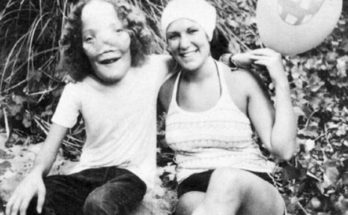Quick Facts
| Net Worth | Not Known |
| Salary | Not Known |
| Height | Not Known |
| Date of Birth | Not Known |
| Profession | Celebrities |
Over the course of history, women have had to battle a lot of discrimination to get a chair at the table in Science. From the very fact, in many countries, education was restricted to men and women are condemned to being homemakers. The journey to unlocking the secrets of our world started with men with women locked out in the back. However, when a few brave and trailblazing women decided they have something to say and contribute to the world, they set a path that millions would later follow.
The contributions of women in science are nothing short of exceptional. All over the world, many female scientists have given their life, literally in pursuit of knowledge that we now benefit from today. In America, despite the sexism that has plagued the world of science in the country, there hasn’t been a shortage of women who have made their mark in helping the rest of the world live a better life. In this article, we take a look at 7 American female scientists who, right from their laboratories and field research, shaped the world with their brains.
Here are Seven Famous American Female Scientists
1. Rachel Carson – May 27, 1907 to April 14, 1964
Before the protection of our environment was cool and every one became an environmentally conscious human being, before capitalist entities pandered to their customers with green planet gestures, there was Rachel Carson. The Pennsylvania born Marine Biologist was a leading voice in the call to protect the environment and her book, Silent Spring is credited as solely advancing the environmental protection movement.
She started her career as an aquatic biologist, working under the U.S Bureau of Fisheries. Scientists, in their quest for knowledge, are usually held back by one fundamental pressure – financial security. It is a fear that affects the scientist as much as it affects the janitor. Luckily for Rachel Carson, she found her security after she published The Sea Around Us in 1951. The book earned her the US. National Book Award and a recognition she’s more than just a scientist. She’s also a gifted writer.
The Sea Around Us was the beginning of a trilogy of books that explored and taught readers about ocean life. All three book, Under the Sea Wind and The Edge of the Sea were bestsellers.
Her life-defining work came in 1962. After returning her focus back to conservation, she discovered certain environmental problems that were caused by synthetic pesticides. Her research and observations were published in Silent Spring in 1962. The publication caused a national controversy that was spearheaded by chemical companies. Rachel, despite the pressure from million dollar companies to retract her stance, she stood her ground and her work caused a reversal of the national pesticide policy. The reversal led to a nationwide ban on DDT and other pesticides.
Perhaps the most important result of her work was the creation of the U.S Environmental Protection Agency which has been at the forefront of regulating companies and in developing environmental protection policies in America.
She attended Chatham University and Johns Hopkins University. She was awarded a posthumous Presidential Medal of Freedom in 1980.
2. Katherine Johnson – August 16, 1918 till date
We probably would have found a way to get to space at some point, but we certainly would have not achieved that feat in 1961 when Alan Shepard became the first American to be in space.
Katherine Johnson scientific contributions are made more impressive when you consider she is an African American woman who worked in a male-dominated space during one of the highest points of racism in America.
Born in White Sulphur Springs in West Virginia, she studied at West Virginia State College and graduated summa cum laude. She joined NASA in 1953 and worked at NASA for 35 years. At NASA, she became a part of a group of women that were considered human computers.
Her work at NASA included calculating trajectories, launch windows and emergency return paths for Project Mercury spaceflights. She was also an essential part of the development of the Space Shuttle Program and a mission to Mars.
Her work has earned her multiple awards, including a Presidential Medal of Freedom awarded to her by in 2015. She also has a biopic made of her where she was played by Taraji P. Henson.
3. Barbara McClintock – June 16, 1902 to September 2, 1992
Barbara was an American scientist whose trailblazing research in the genetic structure of maize earned her a Nobel Prize in Physiology or Medicine. She was the only woman to win an unshared Nobel Prize. She won it in 1983.
Born in Hartford, Connecticut. Barbara was identified as an independent child during her childhood. She fell in love with science at a very young age, in a coincidence that solidified her independent nature. She studied at Cornell University, receiving her Ph.D. in botany. She started her research in Maize cytogenetics and it became her life’s work.
Her dedicated work in the field pushed her to helped the best in the field and was awarded several prestigious fellowships. She was elected a member of the National Academy of Sciences in 1944.
Her defining work in the field came in the 1950s when she discovered transposition and used it to establish the capacity of genes to turn physical characteristics on and off in an organism.
Her discovery was met with skepticism and criticism, but resolute in the conviction of her work and discovery, she pressed on. In the 70s, her work was finally understood and accepted, and she was awarded a Nobel Prize.
The nature of her discovery and the initial response to it once made her famously say “If you know you are on the right track if you have this inner knowledge, then nobody can turn you off – no matter what they say”.
4. Gertrude B. Elion – January 23, 1918 to February 21, 1999
Perhaps one of the defining scientists whose contributions illustrate the ridiculousness of sexism in science. Gertrude lived in a period where she was told women are not supposed to go into chemistry or be scientists, but she ignored the discouragement and pursued her passion. Born in New York City to Robert Elion and Bertha Cohen, Gertrude lost her grandfather at the age of 15 to cancer. The loss instilled in her a desire to cure the disease.
Although she never managed to achieve that, she helped develop a ton of drugs that helped with the development of the AIDS drug, AZT. She also was responsible for the immunosuppressive drug, azathioprine that is used for organ transplants. She also developed the first efficient antiviral drug, acyclovir used in treating Herpes infection.
Her work in developing various drugs and inventing innovative methods for research of various drugs culminated in a Nobel Prize in Physiology or Medicine in 1988.
5. Chien-Shiung Wu – May 31, 1912 to February 16, 1997
Chien Wu may have been born in China but her scientific recognition and prowess came off the back of her work in the United States. Her work disproved the conservation of parity in a research that is now known as the Wu Experiment.
The Chinese-American was an experimental physicist and her work in nuclear physics was critical to the Manhattan Project.
Although she never won a Nobel Prize herself, in a move she famously described thus “I wonder whether the tiny atoms and nuclei or the mathematical symbols or the DNA molecules have any preference for either masculine feminine treatment”.
While she never won the Nobel Prize, her work disproving the conservative of parity paved the way for two of her colleagues to win the Nobel Prize. She has drawn comparisons to Marie Curie and she’s often referred to as the Queen of Nuclear Research.
6. Grace Hopper – December 9, 1906 to January 1, 1992
Computers are inseparable parts of our lives now. Phones. Laptops. Smartwatches. We can barely imagine a world without them anymore. In the development of computer technology, a few women have made significant contributions.
Grace Hopper, an American computer scientist was a pioneer in computer programming. Her work in the popularization of machine-independent programming languages led to the creation of COBOL.
Grace, who worked as a United States Navy Rear Admiral earned a Ph.D. from Yale University and was a professor of Mathematics at Vassar College. Other than COBOL, she also invented one of the first compiler tools.
She was awarded 40 honorary degrees from different universities across the world and was posthumously awarded a Presidential Medal of Freedom by President .
7. Alice Ball – July 24, 1892 to December 31, 1916
Alice Ball is known for the development of an effective treatment for leprosy. Alice was the first woman to receive a master’s degree from the University of Hawaii.
Though she lived a short life, Alice was able to redefine the treatment of leprosy. Ball, who was a chemistry expert developed a way to extra the active ingredient of chaulmoogra oil, which had been identified as an effective treatment for leprosy. By isolating the active ingredient, Ball created a way for the cure to be injected into patients.
Unfortunately, Ball was unable to publish her results before she died and another chemist published her work, refusing to give Ball credit. Thankfully, Dr. Harry Hollman publicly acknowledged her contributions and her method is now known as the Ball Method.
She’s celebrated in Hawaii every four years on the 29th of February. The day is called Alice Ball Day.
Top 3 Richest Celebrities
Also Read: Top 10 Richest People in the world with full biography and details.




